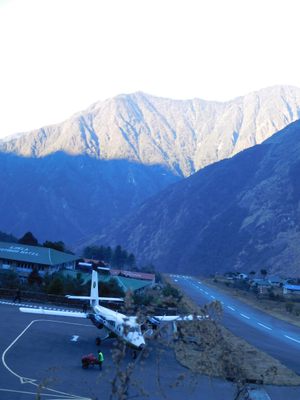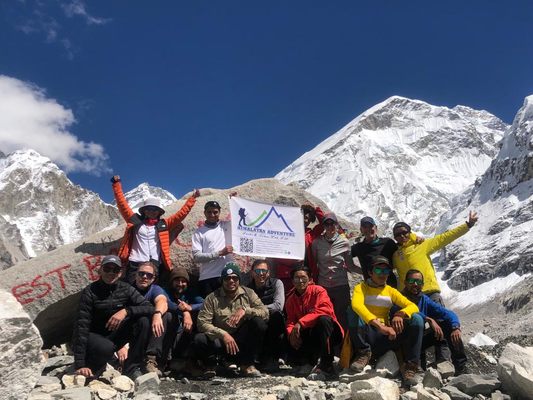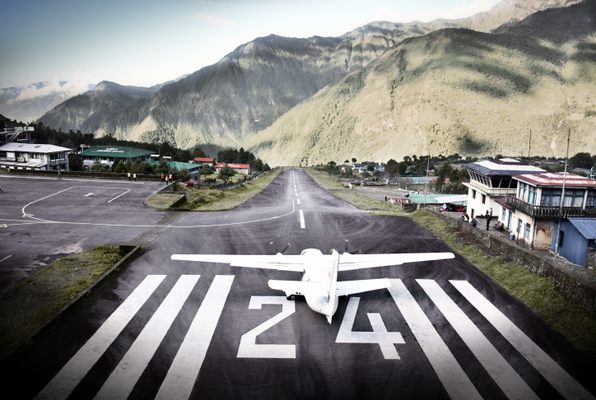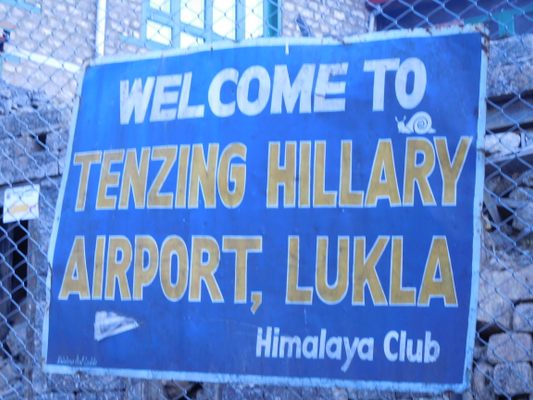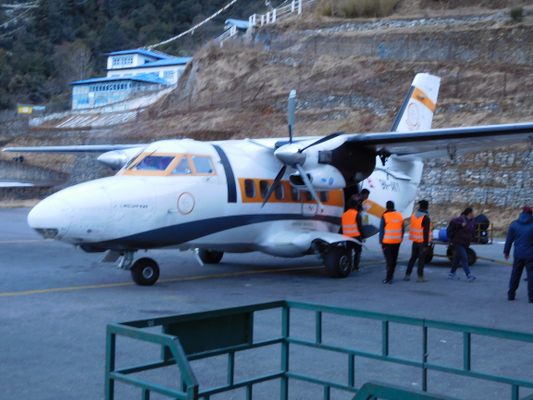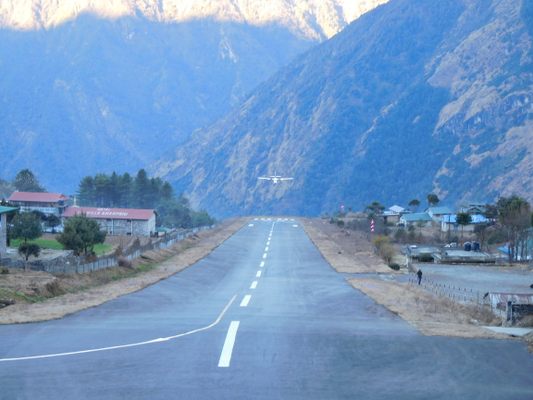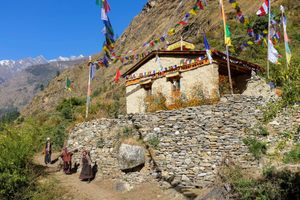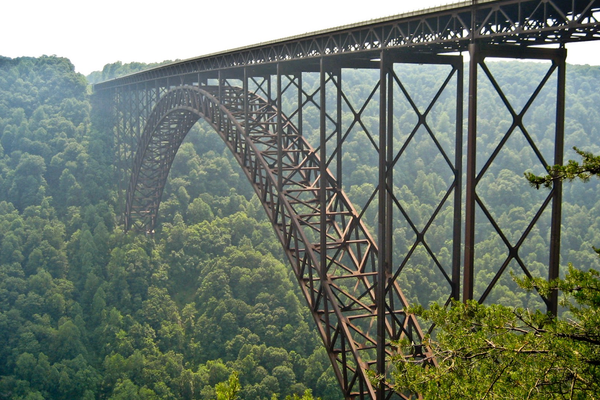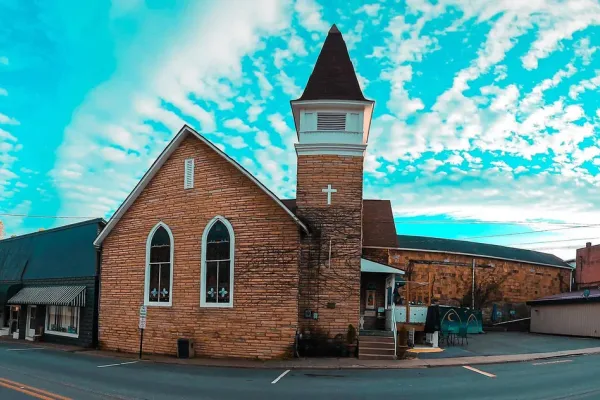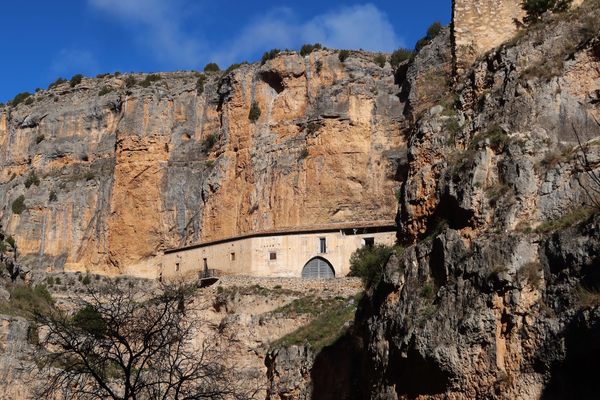About
The little town of Lukla is the starting point of almost all trekking journeys in the Khumbu region. Situated at an altitude of 2,860 meters, Lukla is the first site that trekkers get introduced to when visiting Khumbu. It is a collection of small houses and hotels that are scattered within proximity to the region’s only airport- the Tenzing Hillary Airport. Because of its prominence, Lukla has transformed from a small farming community to a commercial hub of the region that is on par with Namche Bazaar. Due to trekkers staying overnight at Lukla during Everest Treks, the town has seen a rise in the number of luxury guesthouses and hotels in recent years. From Kathmandu, it takes about 40 minutes to reach Lukla via plane.
Also famously known as the Lukla Airport, the Tenzing Hillary Airport is a small airport that is often referred to as one of the most dangerous airports in the world. The airport is among the most famous transport connection between the rest of Nepal and the Everest Mountains, with other ways of reaching Khumbu are long days of trekking. Daily flights occur to/from the airport during daylight hours and in good weather conditions. In contrast to Kathmandu’s steady sun-shining, Lukla often experiences rainfall, sometimes simultaneously with the lack of rain in other parts of the country. Lukla’s topographical position in the mountain gives way to high winds, dense cloud cover, and changing visibility. This, as a result, often leads to flight delays or the airport being closed.
The Lukla Airport was built in 1964. The construction was done under the supervision of Sir Edmund Hillary, and until recently in 2001, the airport runway wasn’t even properly paved. It was renamed in 2008 in honor of Sir Edmund Hillary and Tenzing Norgay Sherpa, the first people to have reached the summit of Mount Everest. The runway is 527 meters long and 30 meters wide and the airport is used mostly for passenger flights and the transport of goods and cargo to Lukla and other villages in the north of the region, as there is no road access.
The airplanes landing or taking off from the Lukla Airport must use a single runway. High terrain blocks the already low prospect of go-around on short final airplane approaches, and the runway ends in a steeply angled drop into the valley below. As such, landing and taking off from Lukla is difficult. The Civil Aviation Authority of Nepal has, as a result, set high standards for which only experienced pilots who have completed at least 100 short-takeoff-and-landing (STOL) missions are allowed to land at the airport. The pilots must also have over one year of STOL experience in Nepal and must have completed ten missions into Lukla with a certified instructor pilot.
However, despite the difficulties, Lukla has one of the busiest domestic airports in Nepal. Accidents happen rarely, and the airport is considered one of the most beautiful airports in the world. It is surrounded by the mighty Himalayas and the towering emerald hills that shadow over the village.
There is no use of air navigation or radar systems. Instead, for landing and take-offs, radio communication is used. The paved road is small and is only suitable for helicopters and small aircraft with fixed wings and short takeoffs.Landing at the Tenzing Hillary Airport begins from north to south, and takeoff is from south to north of the runway. Furthermore, the runway is secured by the Nepal Army and has a wired fence around it.
Despite notoriously having the reputation as the most dangerous airport in the world, the Lukla Airport carried out about 20 or 30 aircraft landings every day during the peak seasons. Almost more than half the trekkers who visit Nepal annually tend to fly into Lukla. While the airport at Lukla is comparatively more dangerous statistically than a typical commercial airport, it is still pretty safe. The aviation officials of Nepal and local airlines are very strict on the acceptable flight conditions and regulations for aircraft making the journey to Lukla.
There are options available for trekking to Everest without flying. The alternate options include trekking to Lukla either from Jiri, Salleri or Kharihola. However, trekking to Lukla instead of flying takes about 3 to 8 days.
Due to Lukla’s position and elevation, weather conditions and visibility are constantly dynamic and can change rapidly. Thus, flight schedules to Lukla can be difficult and are hard to predict. The airlines do not take chances with weather conditions and will return a flight to Kathmandu from anywhere along its journey rather than risk an unsafe landing if the weather conditions change since takeoff.
As such, flight delays are very common. They can happen at any time of year but are especially likely during the monsoon season (late May to early September). If your flight is delayed, you must reschedule for the next flight. Travel agencies take care of rescheduling for you if you are hiring them for treks. As conditions at Lukla can change so rapidly, rescheduling may be very soon after your scheduled departure, or it may take as much as a few days later- it is very difficult to predict. This, of course, can be pretty frustrating, but it is simply a part of the journey to the Everest region.
It is strongly recommended that you add at least a day or two to the end of the trip for flexibility in case of any delays. Extra days should always be scheduled at the end of the trip, as this provides flexibility with the trekking itinerary in case of any weather delays.
After 2023, slight changes have been made to the flights to Lukla. In the peak season (autumn and spring), most flights to Lukla operate from Manthali Airport at Ramechaap (a five-hour drive from Kathmandu) to lower the crowd at Tribhuwan International Airport.
Related Tags
Know Before You Go
You can take a cab from Kathmandu to the Tribhuvan International Airport. The fare is about NPR 1000. It is recommended that you arrive at the airport at least one hour before your flight time. You can also use apps like Indrive or Pathao to get a cab. It is pretty much like Uber and you can get a cab at your location.
Community Contributors
Added By
Published
May 28, 2013
Sources
- https://www.everesthikes.com/kathmandu-to-lukla-flight/
- https://www.magicalnepal.com/trip/everest-base-camp-helicopter-tour/
- https://himalayaguidenepal.com/everest-base-camp-trek/
- https://himalayan-masters.com/trip/everest-base-camp-helicopter-tour/
- https://violetamatei.com/everest-base-camp-trek-cost/
- https://www.myeveresttrip.com/trip/everest-base-camp-trek/
- https://highlandexpeditions.com/lukla-airport-is-it-safe-to-fly/
- https://www.himalayanadventuretreks.com/flight-delay-and-cancellation-to-lukla/





